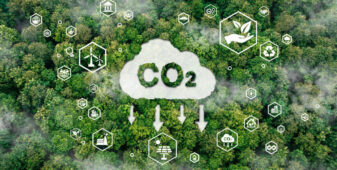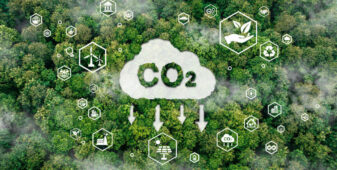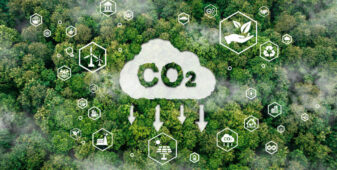Insight Focus
- The UK proposes to include ceramics and glass, which were left out of the EU CBAM.
- CBAM will cover direct and indirect emissions at source.
- Sectors will have seven “CBAM rates” payable according to coverage under UK ETS.
Second CBAM Consultation Launched
The UK government has launched a second consultation on a Carbon Border Adjustment Mechanism (CBAM) that would impose a charge on the carbon emissions generated in the production of selected imported materials including aluminium, cement, iron and steel.
After the initial consultation in early 2023, the second process is seeking views from stakeholders on various parameters of the CBAM, including how the carbon content of imports should be calculated and how a tariff should be levied.
Various proposed elements of the CBAM include:
a) coverage of imported aluminium, cement, ceramics, fertiliser, glass, hydrogen, and iron and steel;
b) a threshold value for imported goods of £10,000 over a 12-month period;
c) an adjustment in the CBAM liability will be made if the imported goods are subject to a carbon price in the country of production;
d) imported scrap materials in the aluminium, glass and iron and steel sectors will not be within scope of the CBAM; and
e) so-called “precursor goods” that are produced as inputs for final products imported into the UK will also be assessed for their carbon emissions and counted within the scope of CBAM.
What’s Included?
It’s worth noting that the proposed coverage includes two sectors – ceramics and glass – that are not included in the EU’s CBAM.
The consultation document stresses that “only goods whose production would be within scope of the UK ETS if produced domestically, and which would be produced as a result of activities currently deemed at risk of carbon leakage within the UK ETS will be considered for potential inclusion within the scope of the UK CBAM.”
This means that even imports of products that are not already produced within the UK would be subject to a CBAM.
To avoid the risk of underreporting of emissions, the government intends to set a default value for each CBAM product “in line with global average embodied emissions weighted by production volumes of key UK trading partners.”
These calculations will include both direct emissions – those generated during production – as well as indirect emissions, which refers to the use of electricity in the process.
The proposal also acknowledges that other countries are likely to implement ever more accurate measurement and reporting of emissions and undertakes to take account of any developments with a view to adjusting its calculation methodologies.
The UK CBAM will implement detailed reporting and verification requirements for all CBAM declarations, similar to those being set up by the EU under its own CBAM. Third-party accreditation services will need to be approved by International Accreditation Forum member organisations.
Pricing and Payment Question Marks
The consultation also seeks views on how the UK CBAM obligations should be payable. While the EU CBAM authority will sell CBAM certificates to importers at a weekly average price of EU Allowances, the UK government is considering a different strategy.
Because “the effective carbon price varies in the UK depending on the availability of other carbon leakage mitigation policies and the electricity intensity of production”, the UK approach would set a different CBAM rate for each sector covered by the tariff.
This sliding scale of carbon pricing would consider the different costs that the UK ETS represents. Some sectors receive free UK Allowances, other sectors pay for all their UKAs, and power generation is also subject to the additional cost of the Carbon Price Support mechanism, which currently stands at GBP 18/tonne of CO2.
In this way, imports of products in a sector in which UK producers are eligible for free allocation would benefit from a CBAM cost adjustment to reflect that free allocation.
The UK CBAM rate would be based on the average UKA auction price in the preceding quarter – roughly six auctions in total.
The consultation also acknowledges that with the spread of carbon pricing, goods arriving in the EU are likely to have been subject to carbon pricing or even CBAMs during their journey. This will require any previous CBAM or carbon payments to be deducted from the UK CBAM liability.
The consultation runs through to June 13, after which the government will analyse the input “within 12 weeks”. Primary legislation establishing the CBAM will be tabled before the system launches in 2027.







